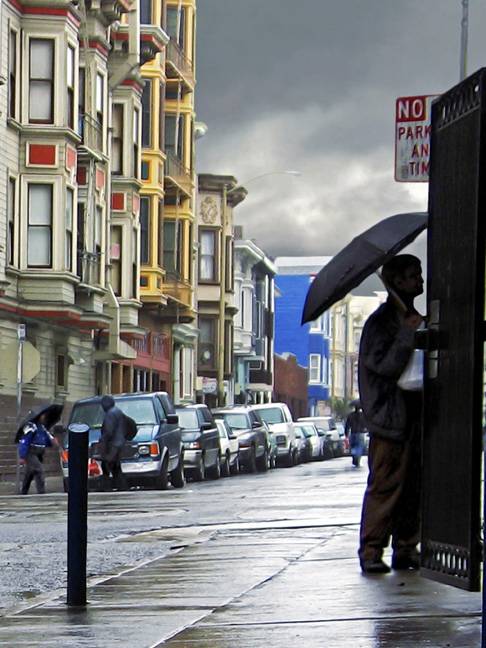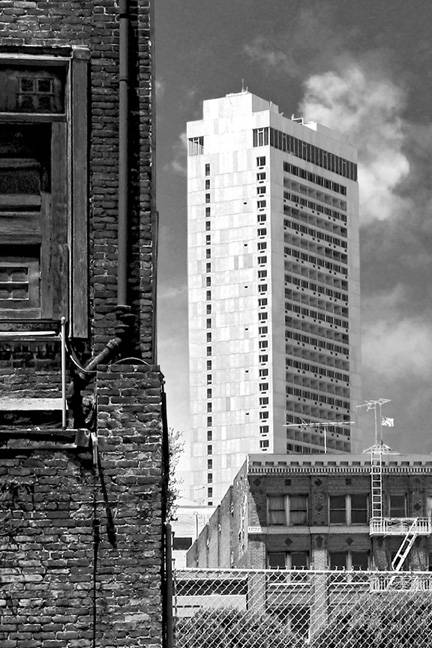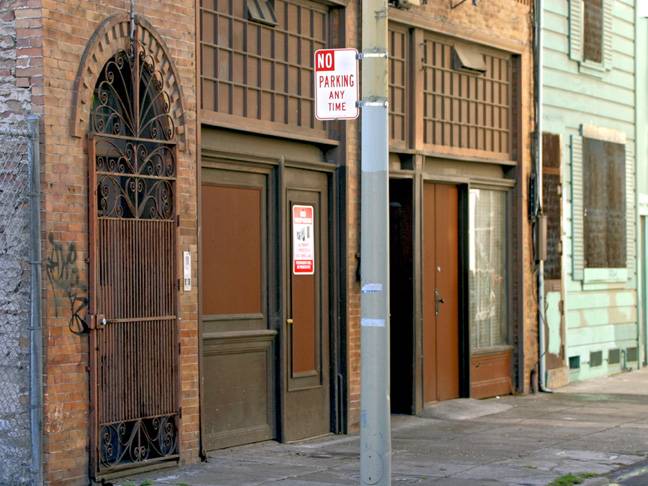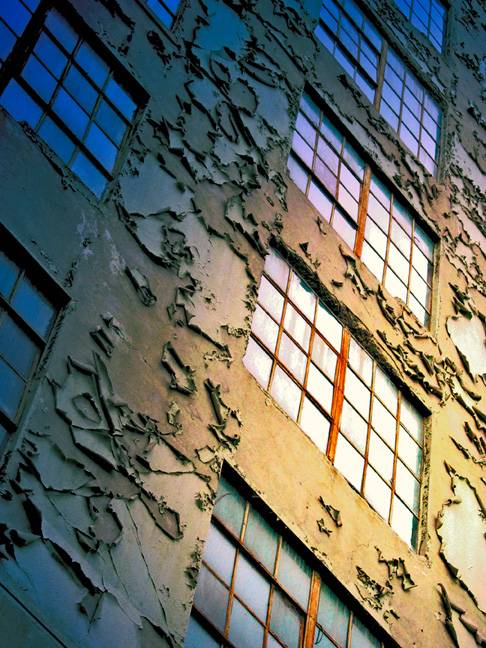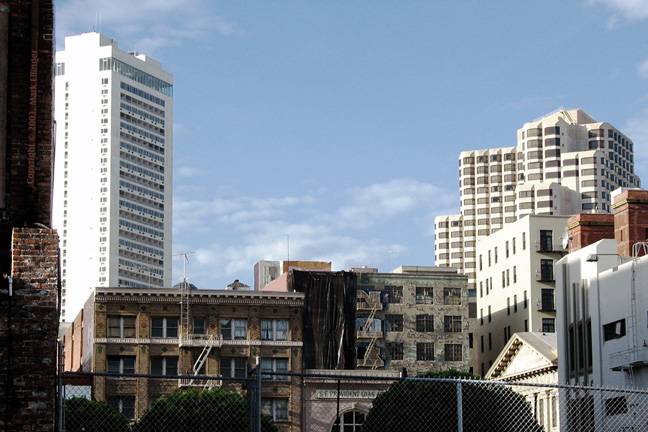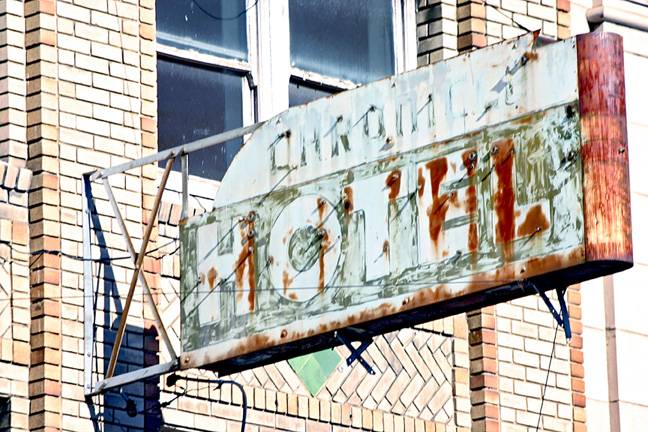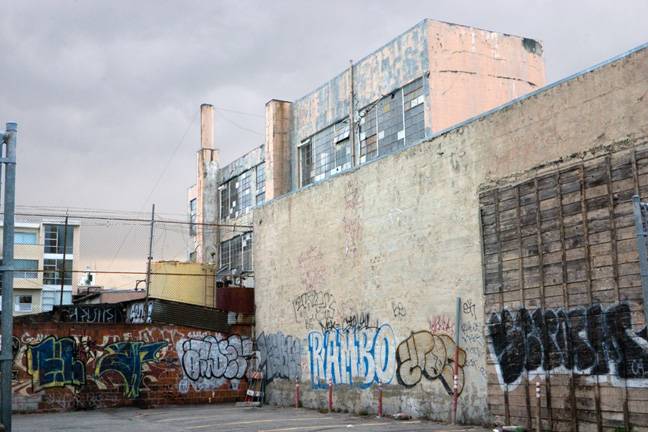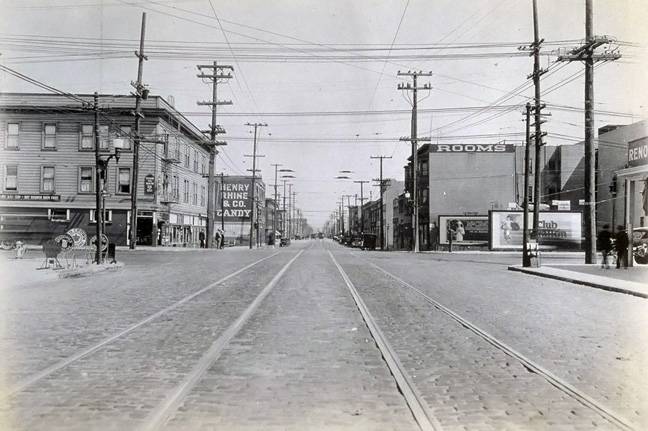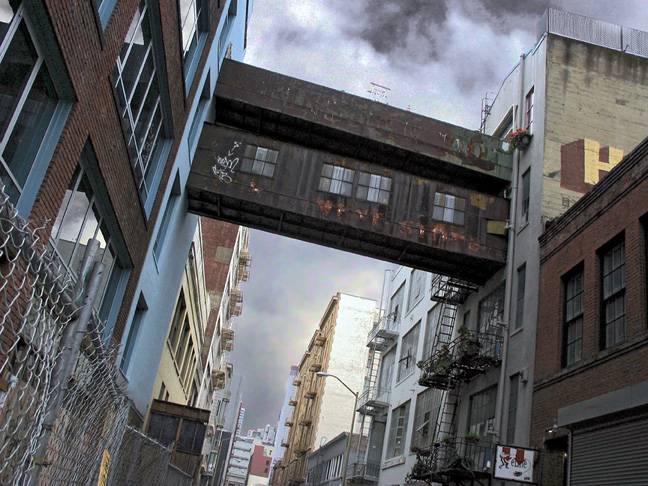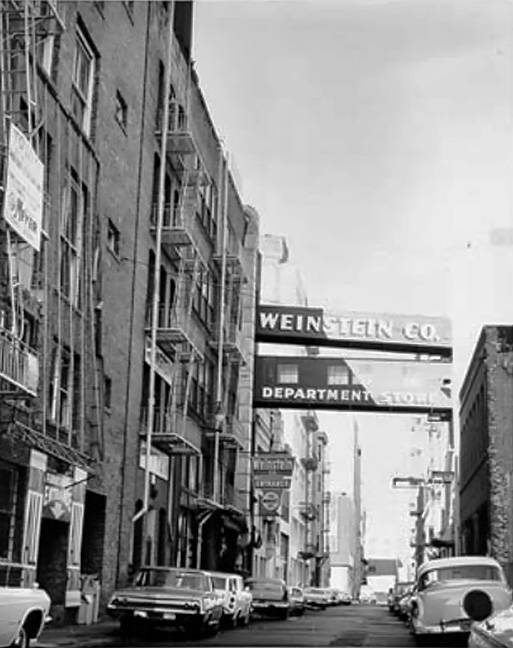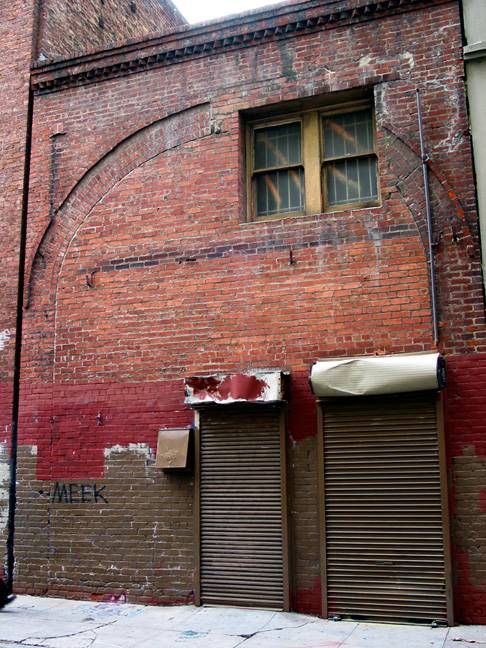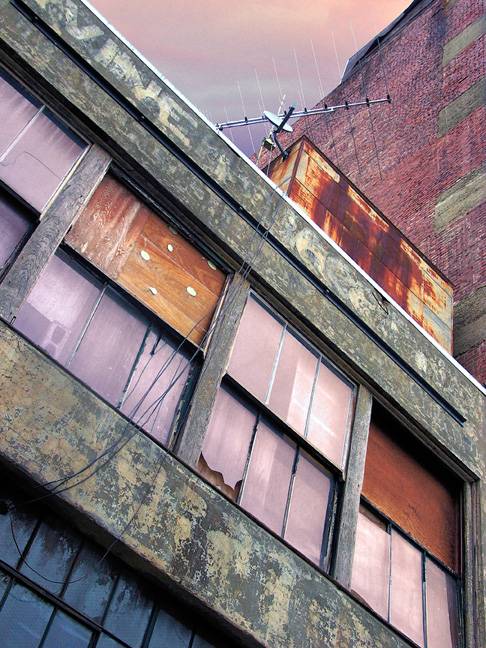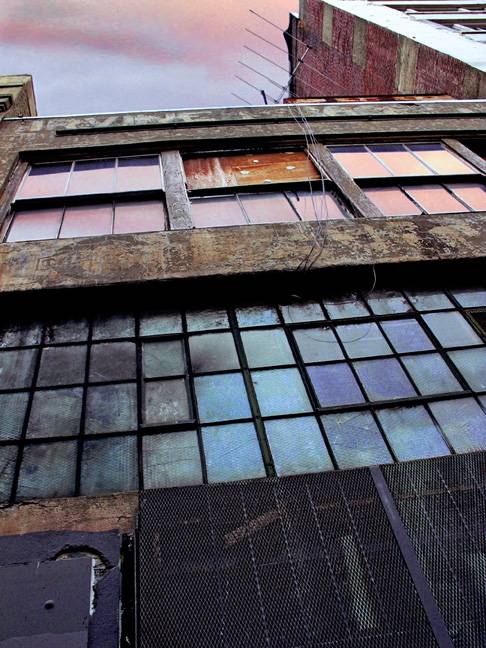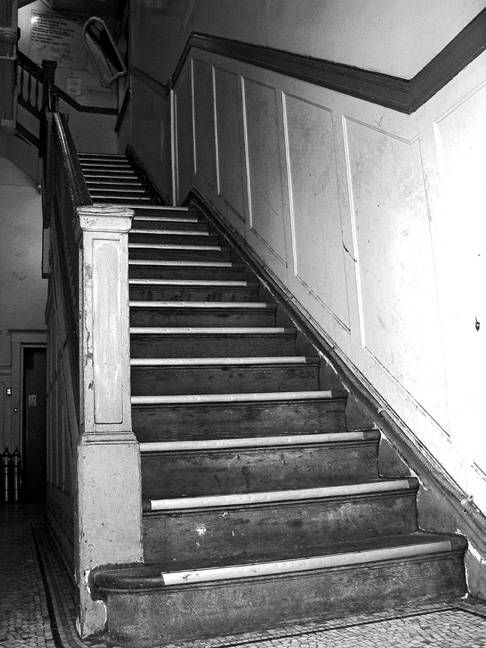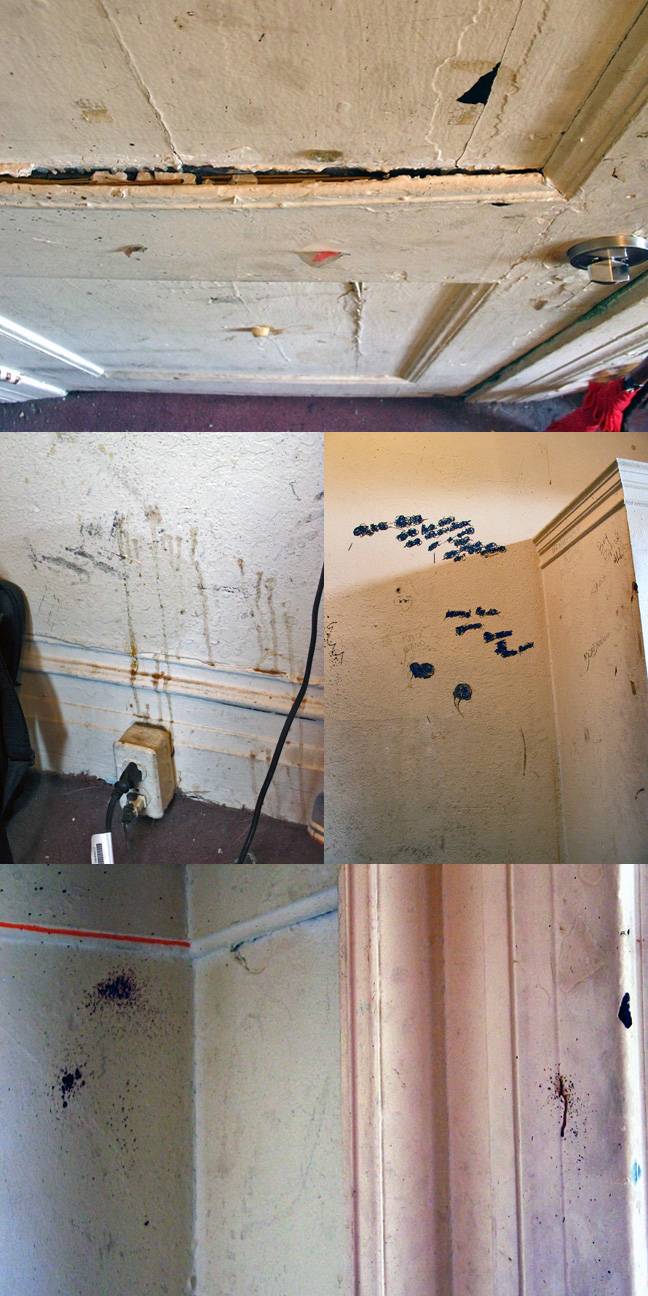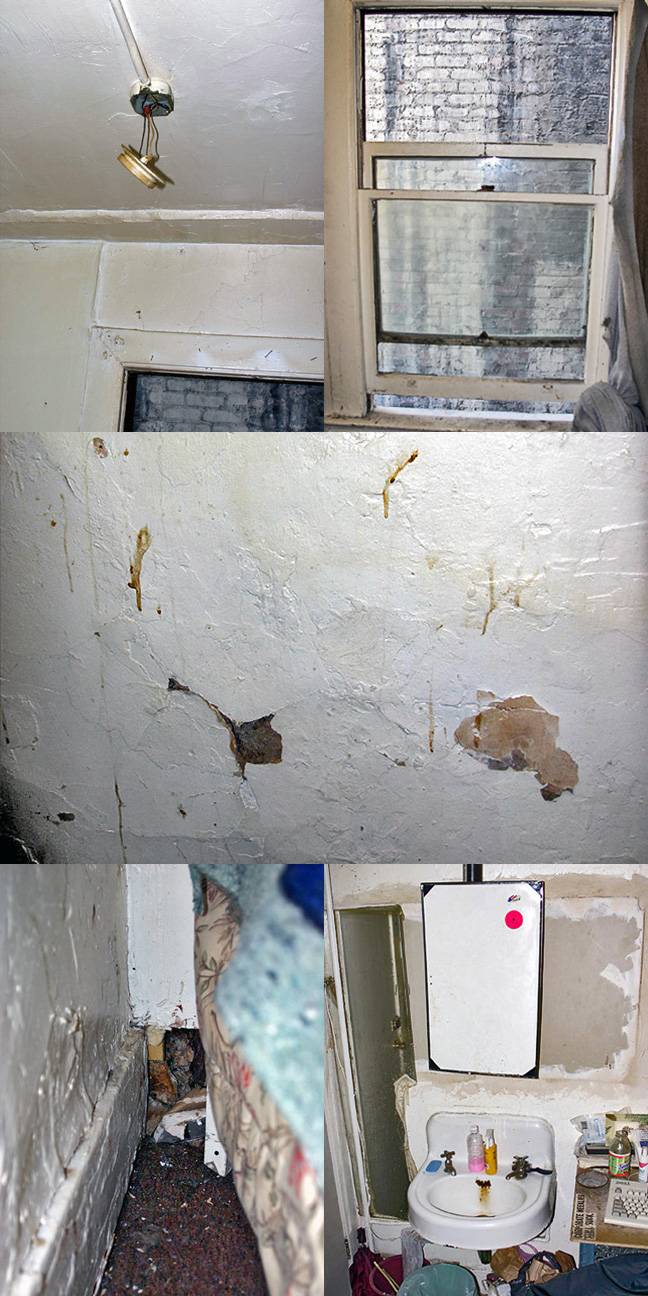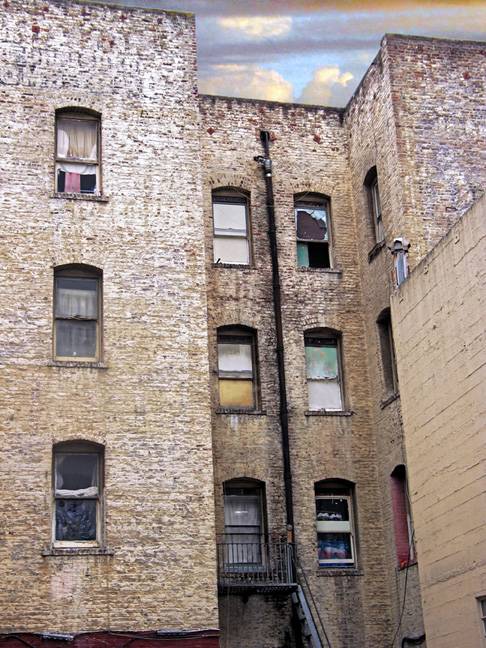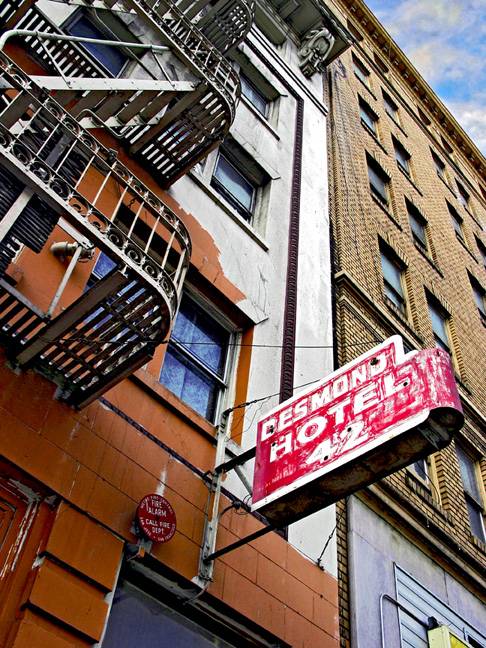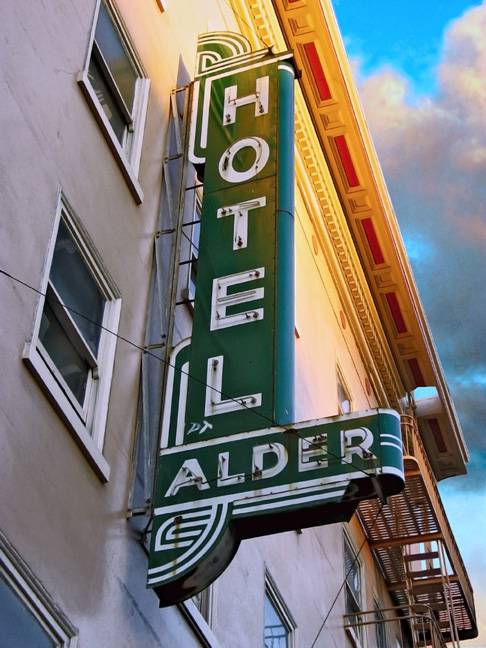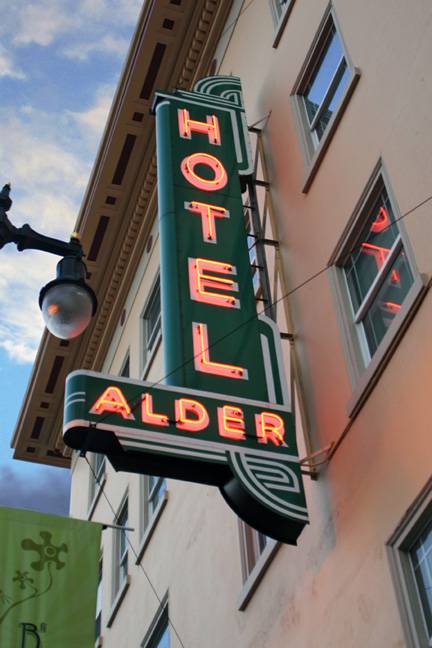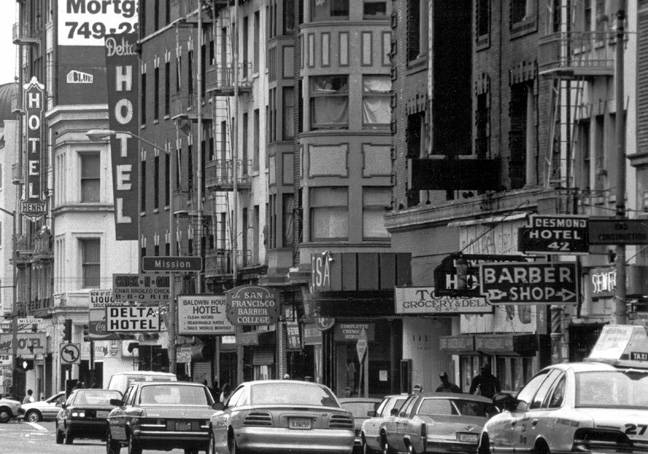Sixth Street (Part Two): Difference between revisions
(Created page with 'Image:6th-&-Natoma.jpg ''Photo: Mark Ellinger''<br> '''“Rainy Afternoon – Sixth and Natoma”''' The building on the far left is the St. Cloud Hotel, a wood frame roomi...') |
No edit summary |
||
| Line 1: | Line 1: | ||
'''<font face = Papyrus> <font color = maroon> <font size = 4>Historical Essay</font></font> </font>''' | |||
''by Mark Ellinger'' | |||
[[Image:6th-&-Natoma.jpg]] | [[Image:6th-&-Natoma.jpg]] | ||
Revision as of 05:43, 19 November 2010
Historical Essay
by Mark Ellinger
Photo: Mark Ellinger
“Rainy Afternoon – Sixth and Natoma”
The building on the far left is the St. Cloud Hotel, a wood frame rooming house above a storefront occupied by the San Francisco Mission, now City Team Ministries, a respite for the City’s dregs that has been in operation for over a hundred years. The yellow building behind the St. Cloud is a wing of the Dudley Hotel, a renovated SRO that now operates as supportive housing.
Photo: Mark Ellinger
“Legacy”
447 Minna Street (rear).
There are still places South of Market, mostly on narrow back streets between the main thoroughfares, where the buildings have stood virtually unchanged for a century, remnants of a vibrant past, survivors of the slash and burn strategies of urban renewal.
Photo: Mark Ellinger
“447 Minna”
Photo: Mark Ellinger
“Peeling Wall”
Abandoned Fire Station. Jessie and Mint.
When the City closed down its Jessie Street fire station, the building was left empty and unmaintained for so long that its sunburned facade began to look like something organic and alive. After I photographed it, the building was transformed into upscale lofts by the Martin Building Company. In memory of the old wall, a large print of this photograph now hangs in their main offices, serving to hinder the old district’s utter submergence in the waters of oblivion.
Photo: Mark Ellinger
“Skyline”
Looking north from Natoma near its intersection with Mary, one sees from left to right the rear of 447 Minna, the San Francisco Hilton Tower I, the Chronicle Hotel, The Provident Loan Company, the Old Mint’s west pediment, and its red-brick chimneys peering over the roof line of the Chronicle Newspaper Building. Behind the Provident are the unfinished offices of the Martin Building Company, the disused Jessie Street fire station, and condos over-topped by the enormous Parc Wyndham Hotel in the background.
Photo: Mark Ellinger
“Chronicle”
Chronicle Hotel. 936 Mission Street.
As the long-empty Chronicle Hotel has languished into uselessness, its blade sign has rusted and faded into cryptic hieroglyphics.
Photo: Mark Ellinger
“Dusk – Harriet Street”
The raw, post-industrial atmosphere depicted here has, regrettably, almost completely vanished from the South of Market landscape. Many of the old factories and warehouses were torn down during the dot-com boom of the ’90s, to be replaced by gauche live/work lofts and oppressive condominiums that have effaced much of the district’s industrial and working-class history.
Source: Bancroft Library, Jesse B. Cooke Collection
Sixth and Folsom, 1926.
All of the rooming houses and light industrial buildings pictured here have been demolished.
Photo: Mark Ellinger
“Inner City (Homage to Chester Gould)”
Stevenson Street.
Spanning Stevenson Street midway between Sixth and Seventh, a covered footbridge connects what used to be Weinstein’s Department Store and the building that served as that company’s office and warehouse space. The department store has been converted into live/work lofts, and the onetime warehouse is now occupied by a dot-com enterprise. I remember when such footbridges were numerous in the back streets of San Francisco, not so very long ago. This is the only one that now remains in the central city.
Chester Gould was the artist who for many years drew Dick Tracy, one of my favorite comic strips when I was a boy. I loved the way he drew urban settings; they were always ominous and foreboding, and the buildings had a tendency to lean inward over the streets, making people appear small and insignificant. He owed a certain debt to film noir, I think, and I owe a debt to his memory for inspiring this picture.
Source: San Francisco History Center, SF Public Library (Photo: Larry Moon)
Stevenson Street, circa 1959.
Photo: Mark Ellinger
“Imprint of the Past”
Stevenson Street between Fifth and Sixth.
This building’s architectural heritage is revealed by an archway, though its opening was long-ago filled in. The design and complexity of the original brickwork hearken back a hundred years, to a time when horses were still in common use. Sadly, this humble but charming example of post-fire architecture will soon be demolished, to make way for a strikingly unattractive, five-story shopping mall and parking garage called CityPlace.
Photo: Mark Ellinger
“Back Street Transfiguration”
Fascination (trade entrance). Stevenson Street.
The day I photographed Fascination’s service entrance promised to be beautiful and sunny. I savored the early morning quiet as the fog began to burn away with the rising of the sun, exposing more blue sky by the minute, signaling the impending demise of the dawn’s pink light. Of the many photos I took, these two captured the magic of Aurora’s brush.
Photo: Mark Ellinger
“Daybreak”
Fascination (trade entrance). Stevenson Street.
Photo: Mark Ellinger
“Stairway to Sunnyside”
Hotel Sunnyside. 135 Sixth Street.
Residential hotel interiors are not easy to photograph. In general, the managers of SROs are strongly, sometimes violently, opposed to any public exposure of themselves or their buildings. This forbidding stairway leads to the rooms in the Sunnyside Hotel, a place where ghosts linger in dark corners and on the landings.
Photos: Mark Ellinger
“Room 210”
Hotel Sunnyside. 135 Sixth Street.
The conditions shown here are these days fairly typical of the profit-driven Sixth Street hotels, and though a few are much better, there are some that are far worse. Monthly rent in 2010 for an equivalent room is commonly between $700 and $900. In case you are wondering, the dark-brown splashes on the walls are blood.
Photos: Mark Ellinger
“Room 302”
Desmond Hotel. 42 Sixth Street.
Early in 2006 I was contacted by a tenant at the Desmond Hotel because the manager had refused to either make his room livable or give him another room, and the tenant wanted photographic documentation for legal purposes. Happy to be of assistance, I later met him in his room, which the Departments of Building Inspection and Public Health had each given a “pass.”
Photo: Mark Ellinger
“Red Window”
Alkain Hotel. 948 Mission Street.
As seen from Jessie Street, the rear of the Alkain Hotel betrays the living conditions inside. Legend has it that the back streets in this area were named for some of the prostitutes who were popular in the days of the Gold Rush, but though in their own way rather charming, such stories are apocryphal. Jessie Street, for example, was named for the wife of nineteenth-century explorer and California politician John C. Fremont.
Photo: Mark Ellinger
“Desmond”
Desmond Hotel. 42 Sixth Street.
Having been consigned to History’s dustbin in the name of alleged improvement, most of Sixth Street’s old blade signs have disappeared, to be replaced by cheap canvas awnings and marquees. Gone is the sign for the Desmond Hotel, and the canvas marquee that replaced it is already faded and damaged.
Photo: Mark Ellinger
“Sunset – the Alder”
Alder Hotel. 175 Sixth Street.
Of the few blade signs that remain, the Alder Hotel’s is the finest. It was restored when the hotel was refurbished in 2006.
Photo: Mark Ellinger
“Dawn – the Alder”
Alder Hotel. 175 Sixth Street.
Photo: Mark Ellinger
“Henry”
Hotel Henry. 106 Sixth Street.
Though not restored, the Henry’s blade sign is still in good repair.
Photo: Mark Ellinger
“Lawrence”
Lawrence Hotel. 48 Sixth Street.
With this photograph, my commitment to this project began. Shortly after I captured this image, the sign for the Lawrence Hotel became landfill. The old Desmond Hotel sign, taken down a year later, is partly visible behind the coarsely made-over barber shop sign (for its former appearance, refer to the next photo).
Photo: Virginia Allyn
Signs on Sixth Street, 1995.
All but three of the blade signs pictured here have been removed and among those that remain, the barber shop sign has been ruined.
(End of Part Two)

